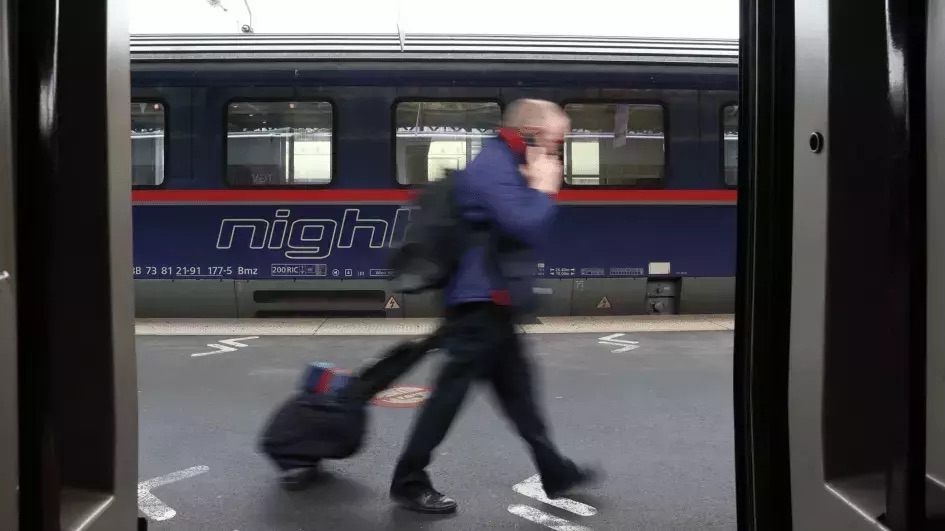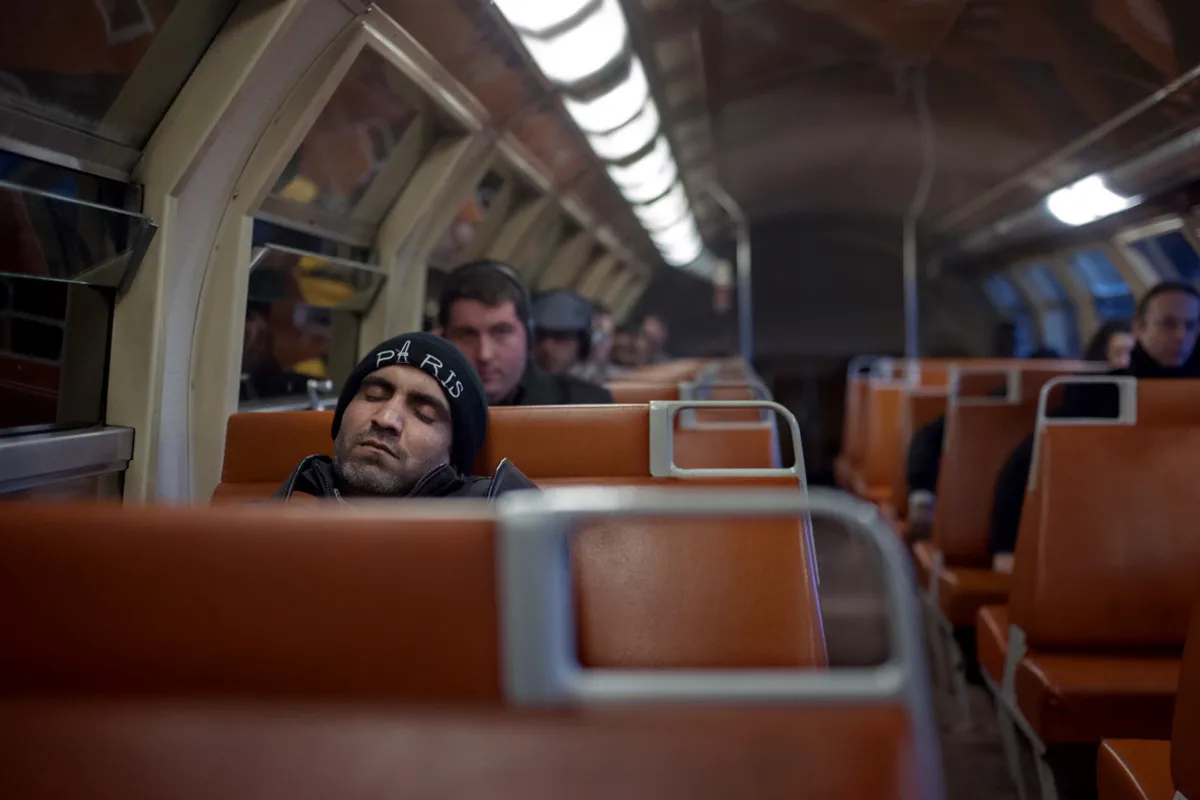Train transport – Expanding the trans-European night train service can enable eco urbanism, contribute to the EU environmental sustainability goals and bring European cities closer together
Cities – People can get from Paris to Berlin with a sleeper train
The sleeper train from Paris to Berlin was reintroduced in December 2023 after an almost-decade-long break, connecting the two Western European capitals again. The Nightjet (NJ 40424) departs three times a week from the German capital’s main station, the Berlin-Charlottenburg, at 20:18 on Monday, Wednesday, and Friday, reaching the “City of Lights” at 10:24 the following morning.
The train then returns to Berlin from Paris and Brussels on Tuesday, Thursday, and Saturday, allowing passengers to reach Berlin and Paris within 14 hours and 06 minutes, with a stop in Strasbourg, the principal city of Alsace.
Passengers coming from the United Kingdom can also enjoy this service when traveling to Paris via the Eurostar by going from the Gare du Nord railway station to the Gare de l’Est railway station.
Eco urbanism – connecting people within the context of the climate crisis
Eco urbanism and efficient, accessible rail transit go hand in hand, connecting citizens and cities. This development marks a big milestone in expanding the trans-European night train service, enabling eco urbanism, and contributing to the continent’s environmental sustainability goals by revitalizing train transport.
«With the new international Nightjet routes, we’re continuing the systematic expansion of our night train business and underscoring our position as a leading provider of night train travel. The ÖBB Nightjet is already a symbol of a united Europe. Now, this partnership between four European railway companies is providing a new service from Berlin to Paris and from Berlin to Brussels with appealing and climate-friendly overnight connections». Said Andreas Matthä, the CEO of the Österreichische Bundesbahnen (ÖBB), the Austrian Federal Railways, which celebrated its 100th anniversary in 2023.
Still, a long-term continent-wide shift in European transportation will require a human commitment to accessible transport and a new way of seeing urbanism. «Rail travel is climate protection, especially with the night train, which also makes traveling practical and convenient. Passengers can board a train in the evening and wake up refreshed the next morning in another European capital. With the new Nightjet connections, we’re bringing major European cities closer together and making climate-friendly travel in Europe even easier. I’m convinced that this is the future of mobility for us. Short- and medium-haul routes in Europe belong to rail». Explained Leonore Gewessler, Austrian Federal Minister for Mobility.
Train travel in Europe – the most environmentally sound choice on the continent
Train travel has captured the imagination of many since its beginnings, with many works of fiction being set on trains. Yet in Europe, train travel has more perks than its atmosphere.
According to a 2020 report from the European Environment Agency (EEA), in 2018, twenty-five percent of the greenhouse gas emissions from the European Union came from transportation. Road transportation accounts for seventy-two percent of this sector’s emissions, with aviation and marine transportation contributing fourteen percent and twelve percent, respectively. Rail transport generated zero-point-four percent of the emissions, with the emissions from diesel trains alone.
Despite its environmental perks, the demand from the public, and the fact that reviving the railroads has been a goal of EU transportation strategy since the 1990s, the complexity of the European railways as a result of intricate, independent national systems coupled with widespread poor service quality and inefficiency, especially for freight, has been making it hard for Europeans to choose train travel.
To lower carbon dioxide emissions from the transportation industry and relieve traffic on critical road connections, the European Union intends to quadruple the modal share of freight rail by 2030. This transition would increase freight rail volumes by about six percent each year in ton-kilometers.

A joined effort to provide people with climate-friendly connections
The night train alliance, comprising Deutsche Bahn (DB), ÖBB, NMBS/SNCB, and SNCF is the coalition behind the night train service from Berlin to Brussels and Paris, allowing passengers to travel overnight between these European cities.
The initiative to establish environmentally friendly night train connections was set in motion by the European railways in 2020, and the new night-time route between Paris and Berlin is a step towards making this shared human commitment to sustainability a reality.
With the sleeper train connections, major European cities can become more accessible, bringing them closer together and encouraging climate-friendly travel within the European continent. The partnership between the four European railway companies demonstrates the potential of integrated rail networks and enhances the vision of a united Europe without borders.
«Today is a good day for all passengers and commuters who will benefit from the new rail services between the European capitals. This new product has been made possible thanks to the close cooperation of all the parties involved, who have created a true night train alliance and, in doing so, are supporting us in implementing our TEE 2.0 concept by providing specific offers for passengers. I fully believe that we need more teams playing like this within Europe’s railways in order to make rail even more appealing than competing modes of transport. The Austrian, French, Belgian and German railway companies, with their night train alliance, have shown us how this can be done». Said Dr Volker Wissing, German Federal Minister for Digital and Transport.
The night train network expansion
This expansion of the night train network goes beyond the Paris-Berlin connection inducted last Fall. In the current timetable, additional services have been introduced, including daily sleeper trains and seated coaches on the Munich-Vienna-Warsaw line, as well as the Zurich-Prague and Munich-Venice/Rijeka/Zagreb/Vienna-Budapest night train routes, which have been introduced back in December 2022, while the night train service that the cities of Vienna and Innsbruck to Brussels was launched back in 2020.
«Three great European capitals – Berlin, Brussels and Paris –from now on have a convenient and climate-friendly connection. This will be a huge step towards carbon neutrality for our city, because rail travel’s per-passenger greenhouse gas emissions are only one-sixth of those caused by air travel. Traveling by night train isn’t just good for the environment, it’s also much more relaxing. I wish many passengers this route to Brussels and Paris. I also hope that the passenger numbers will soon lead to night trains from Berlin to other major European cities, and that Berlin will receive many very well-rested visitors». Explained Manja Schreiner, Berlin senator for Urban Mobility, Transport, Climate Action and Environment.
Human commitment – making train travel more accessible
Railway transport has a long history in the heart of Europe. In Berlin, the first train from the city to the nearby town of Potsdam ran back in 1838. Since the nineteen-nineties, the governments in the EU zone have been investing more in the road network than the railway one. According to the T3 Transportation Think Tank and Wuppertal Institut 2023 report, the EU-27, the United Kingdom, Norway, and Switzerland invested thirty-four percent more on extending roads than railways.
Regarding longer cross-country trips, flying is the most convenient option for many Europeans, despite its environmental cost because of the low fares airline companies can offer due to the sizable subsidies they receive. According to the Italian Transport Regulation Authority, the sum the airport companies operating in the country gave airlines in 2023 amounted to around 340 million euros.
These subsidiaries add up: a 2023 Greenpeace research indicates that rail travel inside the continent is still seventy-one percent more expensive than flying. So, while expanding the night train network is a step in the right direction at a European level, human commitment to make rail transport more accessible at a continental level would need to be applied on multiple levels to make rail transport as accessible as other forms of transportation.



















